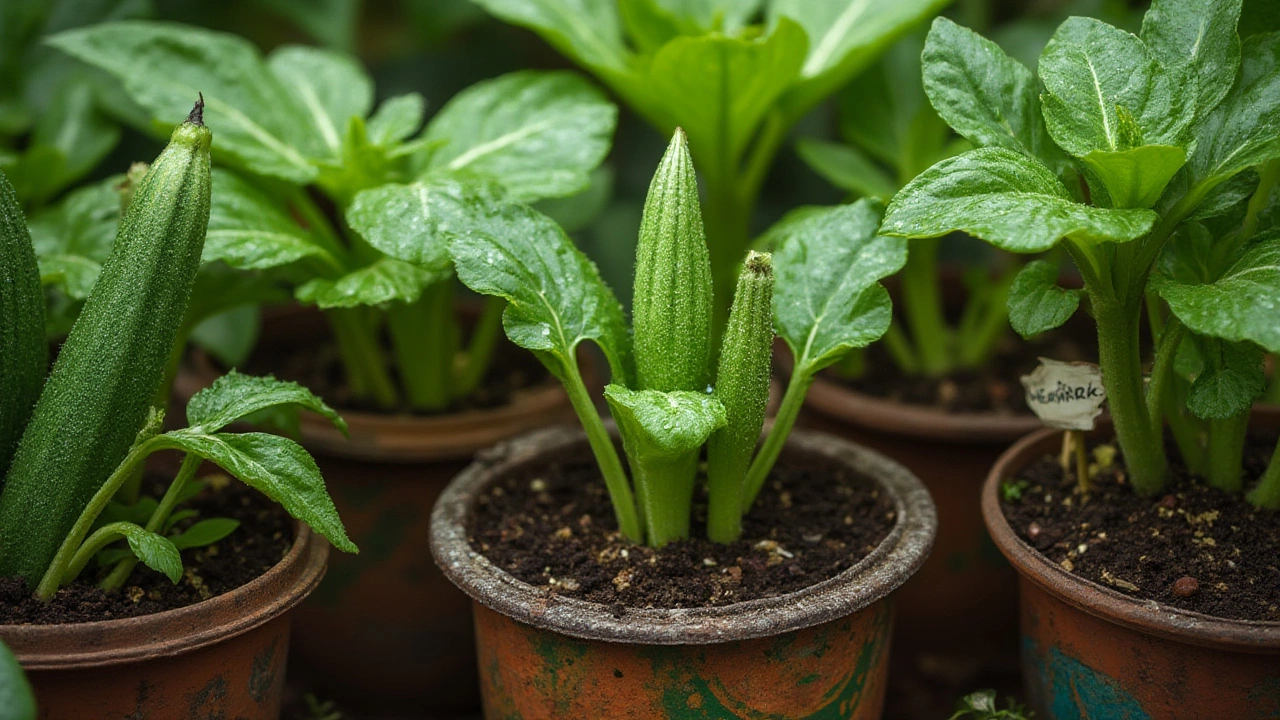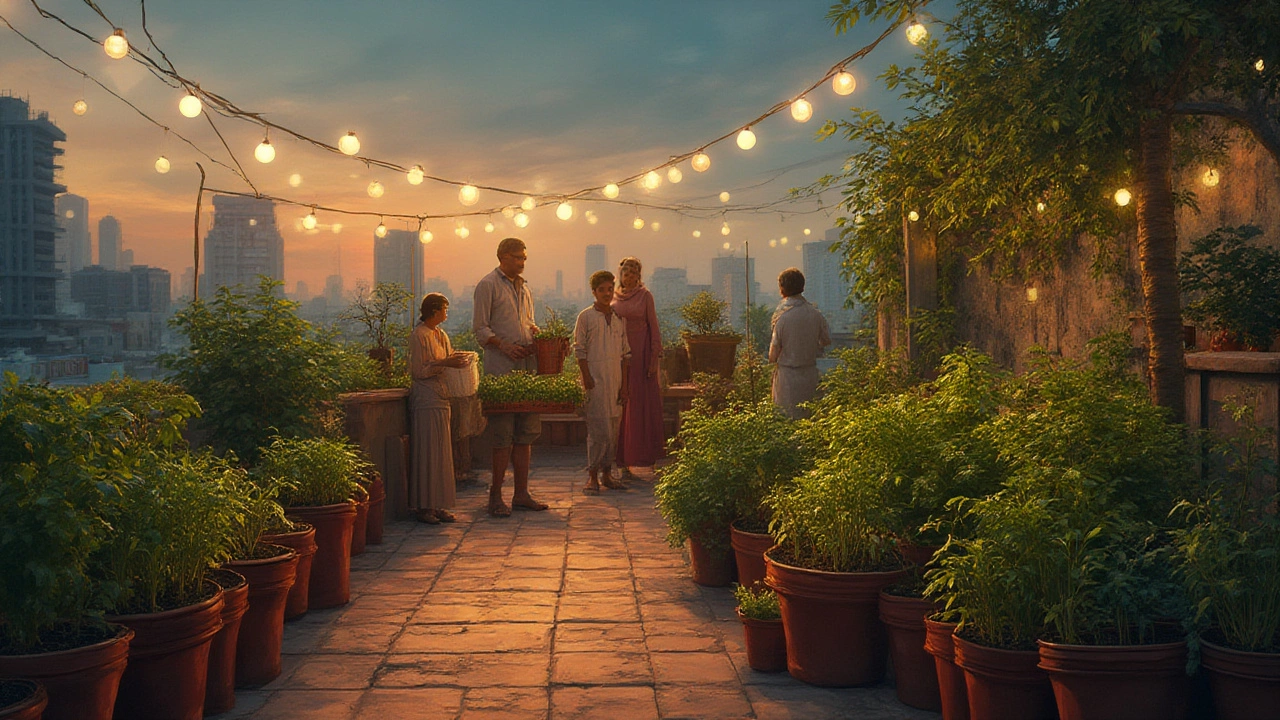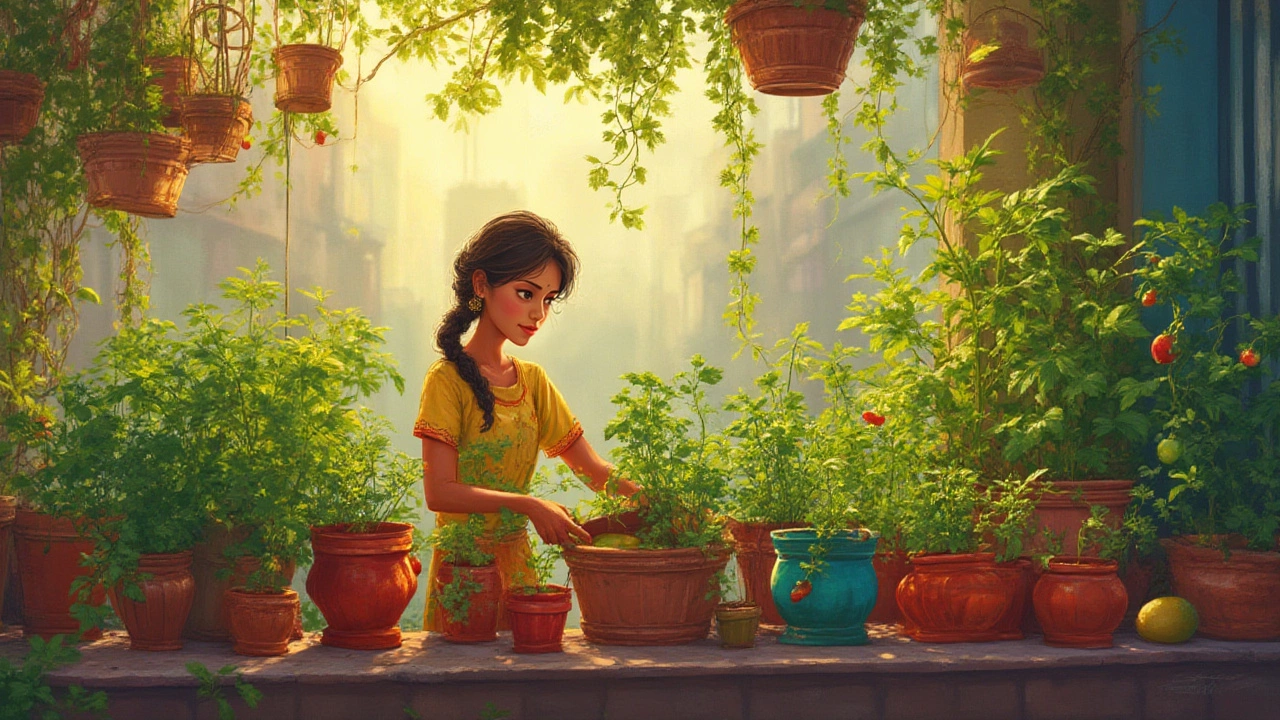Alright, if you’ve ever looked at a boring balcony or a tiny patio and imagined it full of lush, green veggies, you’re definitely not alone. Space is tight for most of us, but that doesn’t mean we have to skip fresh, homegrown vegetables. Turns out, growing food in containers isn’t just possible, it’s actually a smart move if you pick the right plant. But what vegetable rules the container world? The answer might surprise you—and it could change the way you see your sunny window or cramped concrete stoop.
The Clear Winner: Tomatoes and Why They Lead Container Gardens
If there’s an all-star in the container gardening scene, it’s got to be the tomato. Not just any tomato, but those compact, determined varieties bred just for patios and pots. Famous garden writer Margaret Roach once said,
“Tomatoes are the equivalent of a summer blockbuster—everybody wants them, and with the right container setup, almost anyone can have success.”Tomatoes stand out because they’re productive, beautiful, adaptable, and they taste like pure sunshine when grown at home. There’s even science behind their popularity. A report from the National Gardening Association found tomatoes are the #1 vegetable grown in containers in the U.S.—no other veggie even comes close in popularity.
Why are tomatoes the top pick? First, they deliver plenty of fruit per square foot. Even a single five-gallon bucket can be home to a cherry tomato plant throwing out dozens of juicy red (or yellow, or even purple) treats every week. Secondly, their root systems adapt easily to being stuck in a confined space, which can’t be said for, say, sprawling squash or deep-rooted carrots. Tomatoes come in so many ‘dwarf’ and ‘patio’ types, too, that there’s one for just about every possible spot—from the sunny ledge in your kitchen to a rooftop garden in the city.
But here’s where it gets interesting. Tomatoes don’t just tolerate containers—they actually love the warmer, more controlled conditions. In a pot, the soil heats up faster in spring, helping plants get a jump start on the season. Plus, keeping your plants in containers means you control the soil mixes. Sick of dealing with clay or pests? Not a problem—you pick exactly what dirt and nutrients go in the pot. That’s also why tomatoes usually stay healthier and produce fruit sooner from balcony gardens than backyard beds.
Now, they’re not completely fuss-free. Tomatoes in containers are thirsty, especially when they’re packed with growing fruit. Watering deeply (sometimes daily in summer!) and adding a good mulch layer can help lock in moisture. Liquid fertilizer every couple of weeks ensures steady growth and flavor-packed tomatoes, too. If you’ve got limited sunshine or just a few hours of good light a day, opt for smaller, determinate varieties like ‘Tiny Tim,’ ‘Patio Princess,’ or ‘Red Robin.’ These are genetically inclined to stay small and will thrive in containers as little as twelve inches across.
Tomatoes are also a social plant—really! Growing companion herbs like basil or oregano in the same pot not only looks great but confuses pests and even improves flavor, or so say generations of Italian gardeners. What’s not to love about fresh pasta sauce just outside your back door?
I’ve tried growing everything from ‘Sungold’ (those golden-orange cherry types) to wild ‘Micro Tom’ in containers on a fourth-floor fire escape. With a sturdy stake and regular trimming, I usually get more tomatoes than we ever eat fresh. My spouse Elara and I end up giving bags to friends. That’s another container bonus—if frost threatens, just carry the pot inside for the night and you’ll save the crop.
If you’ve ever hesitated to plant food on a balcony because you worry about pests or aggressive roots, tomatoes have your back. Unlike cucumbers, which wander and need serious supports, or root veggies that want depth, tomatoes keep upright with a basic cage or bamboo stick. And if you’re worried about disease, it’s much easier to spot and address issues in a single pot than in a tangled garden bed.
The catch? Don’t skimp on the container size. Go for at least a five-gallon bucket per standard tomato plant and drill drainage holes (lots of them). A lightweight potting mix—never regular yard soil—offers that perfect combo of air, moisture, and nutrition. Add crushed eggshells for extra calcium if you’ve ever battled ‘blossom end rot.’ And here’s a pro tip: move your pots around if weather changes or your sun shifts across the season. Container gardens are meant to roll with you, literally.
No wonder, then, that tomatoes come out on top. They’re the reward that makes all the effort worth it. If you have just one spot and one pot, go tomato, and you’ll understand the hype with that very first, sun-warmed bite.

Close Contenders: Leafy Greens, Peppers, and Radishes That Thrive in Pots
While tomatoes hog the spotlight, container gardening has a lot more to offer—especially if you want quick harvests or a steady supply of fresh bites. Leafy greens are second only to tomatoes in the container garden popularity contest. Lettuces, spinach, arugula, and chard don’t just tolerate tight spaces—they love them. Because they have shallow root systems, you can grow them in trays, window boxes, and even recycled salad clamshells. They’re fast, too: Most baby greens are ready for harvest three or four weeks after sowing. This ‘cut and come again’ approach lets you snip leaves for sandwiches or salads and watch the plant regrow week after week.
What makes leafy greens almost unbeatable is how well they handle shade, crowding, and fluctuating spring temperatures. While tomatoes demand lots of sun, greens can manage with as little as four hours a day. That’s good news if your apartment faces north or your patio only gets a few strips of sunlight. There’s also almost no ‘waiting for the harvest’ anxiety. Flashy Butter Oak, Red Romaine, or basic spinach—throw the seeds in, keep the soil damp, and eat like royalty right from your porch.
Peppers, especially dwarfed or compact types like ‘Lunchbox’ or ‘Mini Bell,’ are another smart container choice. The roots are more compact than tomatoes, and they don’t tend to flop or sprawl. Hot chili types are surprisingly at home in pots, too—as odd as that might sound. They crave heat, and container soil and brick patios act like a radiator. If you start from nursery plants in spring, you’ll be snipping peppers for months. For a little color, ‘Purple Beauty’ or ‘Jingle Bells’ look wild on a balcony. The fruits hang upward like ornaments and are great for snacking or stir fries.
Let’s talk about radishes—they are criminally underrated in pots. Radishes germinate in just a few days and are harvestable about three weeks after planting. The best part? You can tuck them around the base of bigger plants (like tomatoes or peppers) and maximize every square inch. Their flavor intensifies with the sun and can outshine anything store-bought with some creative seasoning. French Breakfast, Cherry Belle, and Watermelon radish varieties do especially well in containers. Try a mix for fun shapes and colors.
You don’t even need special equipment for these guys. Any food-safe plastic tub (like an old yogurt container) with holes poked underneath can become a radish or spinach nursery. Just remember: smaller containers dry out faster, so keep an eye on moisture if days are hot or windy. Mix in a slow-release organic fertilizer, and boom—salad city.
Here’s a quirky tip: greens do surprisingly well grown indoors in winter with nothing but a grow light from the hardware store. I keep a row of mini bok choy and arugula on my kitchen shelf. Instant garnish, even when snow piles up outside.
Both peppers and greens attract fewer bugs because you can keep them off the ground and away from crawling pests. If you struggle with rabbits, slugs, or molding roots outside, shifting the action onto a raised deck or windowsill gives you fresh food with way less stress. And for kids? Fast-growing greens or radishes in pots make instant, magical science projects that end in real snacks. It also gets them invested in what they eat—a win for the dinner table.
Even if you’re a complete rookie at gardening, these veggies won’t judge your brown thumb. They’ll forgive a little neglect, reward you with obvious, real progress, and make you feel like you’ve cracked some secret code to city living. No need for acres of land or fancy equipment—just a willing heart, a bag of soil, and a splash of light.

Expert Tips to Maximize Your Container Vegetable Success
If you’re itching to plant your first (or fiftieth) container veggie, a few simple tweaks can turn a decent season into a blockbuster. Many people get tripped up by container size, soil, and watering. Here’s how to stack the odds in your favor so even that rented balcony feels like a mini farm.
Start with as much space as you can afford. The more room roots have to roam, the sturdier and more productive the plant will be. For tomatoes and peppers, that means a real five-gallon (about 20 liters) pot—nothing smaller. Even lettuce and spinach appreciate eight inches of depth. If you’re short on containers, think creatively: old buckets, wooden crates, and even heavy-duty reusable shopping bags (lined and poked for drainage) all make excellent planters.
Drainage is everything. Most plant failures come from soggy, compacted soil suffocating roots. Drill holes, place a few stones at the bottom (not too many), and use a high-quality, lightweight potting mix. Do not be tempted by heavy garden dirt—it compacts and blocks airflow. Look for mixes with coconut coir or peat moss, perlite, and some slow-release plant food. Your plants will thank you by exploding with growth instead of sulking from root rot.
Set yourself a watering routine. Hot, windy days pull water out of pots faster than you’d think—sometimes more than once a day in midsummer. The sure-fire trick is to feel the top two inches of the soil. Dry? Time to water—slowly, right to the roots. Self-watering pots or sticking a bottle with holes upside down into the dirt can save time if you travel or just forget. Mulch the surface with straw, bark chips, or even cocoa hulls to help slow evaporation and chunk up that garden aesthetic.
Don’t forget, container gardening means you’re in the driver’s seat for nutrition, too. Liquid feed every 10 to 14 days, especially as tomato and pepper fruits start to set. Fish emulsion, kelp, or even a balanced tomato food from the garden shop does the trick. Greens can often get away with less, but the flavor goes next-level with consistent slow-release feedings. Pay attention to your plants. Wilted leaves or pale color usually means they want more to drink or eat—fix it early, and you’ll avoid bigger headaches later.
Keep an eye out for sneaky pests. Aphids, spider mites, or even squirrels can show up just when you think you’ve won. Check leaves, especially the undersides, every week. If you find anything, a quick blast of hose water or mild soapy spray usually solves the issue. For tougher critters, a light dusting of food-grade diatomaceous earth on the soil goes a long way. If you have squirrels determined to steal the cherry tomatoes before you do, drape old net curtains or mesh over the plant until you’re ready to harvest.
If space is tight, think vertical. Add a trellis or balcony rail for tomatoes and peppers. Hang baskets with baby greens or trailing beans. Stack pots on plant stands—just make sure they all get enough sun. Move your pots as the seasons change, chasing the light. Sometimes the best spot isn’t where you started in March but where the sun hangs out in July.
If you’re looking for max flavor and minimum fuss, go for heirloom varieties sold as ‘good for containers’ or ‘patio size.’ These types are bred for tight quarters and offer wild colors and great stories to tell your friends. Don’t be afraid to mix things up—a pot with a tomato, a ring of lettuce, and scrambling radishes underneath packs a little ecosystem into one tiny space.
So, whether you’re craving juicy homegrown tomatoes, a daily salad picked right outside the kitchen, or crisp peppers to snack on while watering, container gardening is your fast track to flavor and fun—even if you’ve got nothing but a sunny step out your door. Give it a go. You’ll eat better, unwind more, and maybe even convince your neighbors that dirt under the fingernails is the new city chic.

